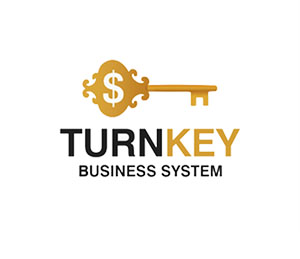How Much Do White Hat Hackers Earn? $81 Million a Year, 13% Growth, and the Era of "Bionic" Researchers

How Much Do White Hat Hackers Earn? $81 Million a Year, 13% Growth, and the Era of "Bionic" Researchers
The cybersecurity world is set to experience a period of accelerated growth in 2024–2025: HackerOne announced that white hat hackers worldwide have received $81 million in payouts for vulnerabilities discovered over the past 12 months— a 13% increase from the previous year (HackerOne data).
In this article, we'll explore how the bug bounty research economy has changed, which types of vulnerabilities are most in demand, how AI is transforming security practices, and what awaits "bionic" hackers in the coming years.
In this article, we'll explore how the bug bounty research economy has changed, which types of vulnerabilities are most in demand, how AI is transforming security practices, and what awaits "bionic" hackers in the coming years.
HackerOne and the Bug Bounty Economy
HackerOne manages over 1,950 bug bounty programs, providing vulnerability disclosure, penetration testing, and code security auditing services. Its clients include Anthropic, Crypto.com, GM, GitHub, Goldman Sachs, Uber , and government agencies, including the US Department of Defense.Over the course of the year, the platform recorded record payouts: programs paid researchers $81 million , which is 13% more than the previous year.
The average researcher earns approximately $42,000 per year. The top 100 programs awarded $51 million between July 2024 and June 2025 , with the top ten receiving $21.6 million of that total.
At the research level, the figures are even more telling: the top 100 bug hunters of all time earned a combined $31.8 million . More and more specialists are reaching six-figure annual incomes.

How Much Do White Hat Hackers Earn? $81 Million a Year, 13% Growth, and the Era of "Bionic" Researchers
What's Changing: AI Vulnerabilities and Shifting Dominant Vectors
HackerOne notes a sharp increase in interest in artificial intelligence-related vulnerabilities. Over the past year, the number of such reports has increased by more than 200% , and prompt injection cases by 540% , making them the fastest-growing threat class.In 2025, the platform will host 1,121 programs in which AI technologies are included in the search area—a 270% increase compared to last year. Moreover, over 560 reports submitted by autonomous AI agents have already been validated.
Also, trends are shifting:
Outdated techniques such as XSS and SQL injections have become less common.
Authorization vulnerabilities—incorrect access control, IDOR —are showing a steady increase.
Moreover, researchers are actively using AI tools—according to a HackerOne survey, 70% of the 1,820 respondents are already using such solutions to improve search efficiency.
According to HackerOne CEO Kara Sprague, a new generation of "bionic hackers" who use AI to augment their own abilities is changing the landscape of vulnerability discovery, now finding bugs that were previously inaccessible.
Analytics: growth factors and barriers
Growth factors:The complexity of digital systems. AI-powered systems, distributed architectures, microservices—all of this creates new attack surfaces.
Security budgets are growing. Companies are willing to pay for protection against critical exploits, especially in AI environments.
Integrating AI into researchers' workflows accelerates the generation of ideas, attack patterns, and increases reach.
Competition and payout distribution. Tighter selection, increasing number of participants, decreasing margins.
HackerOne is already investing in Hai's AI tool , Copilot, which summarizes cases, provides insights, and helps automate the platform, speeding up verification and analysis.
HackerOne
The platform also notes growing participation from enterprise clients: in its 2025 report, payments to the company's researchers totaled $77.2 million thanks to AI integration and the expansion of security services.
HackerOne
Forecast and development scenarios
Baseline scenario (60%):Steady growth in payouts by 10–15% per year, further shift towards AI vulnerabilities, integration of “bionic” tools, and an increased role for high-quality researchers.
Growth Scenario (25%):
Breakthrough technologies (multi-agent AI pentesters, autonomous scans) will double vulnerability coverage, with payouts increasing by 30–40%. (See MAPTA as an example of multi-agent AI pentesting.)
Negative scenario (15%):
Spread of "AI slop" reports, decreased trust, reduced bug bounty budgets, tightened filtering, and barriers to entry.
Why is this important?
Talent shortage: Bug bounty remains an important security channel, attracting talent outside of traditional companies.
Human-AI Symbiosis: Bionic hackers will combine the creativity and speed of machines to create a new security model.
The real cost of mistakes: Vulnerabilities in AI systems can have catastrophic consequences, so the demand for discoveries and defects will grow.
By Claire Whitmore
October 6, 2025
Join us. Our Telegram: @forexturnkey
All to the point, no ads. A channel that doesn't tire you out, but pumps you up.









Report
My comments